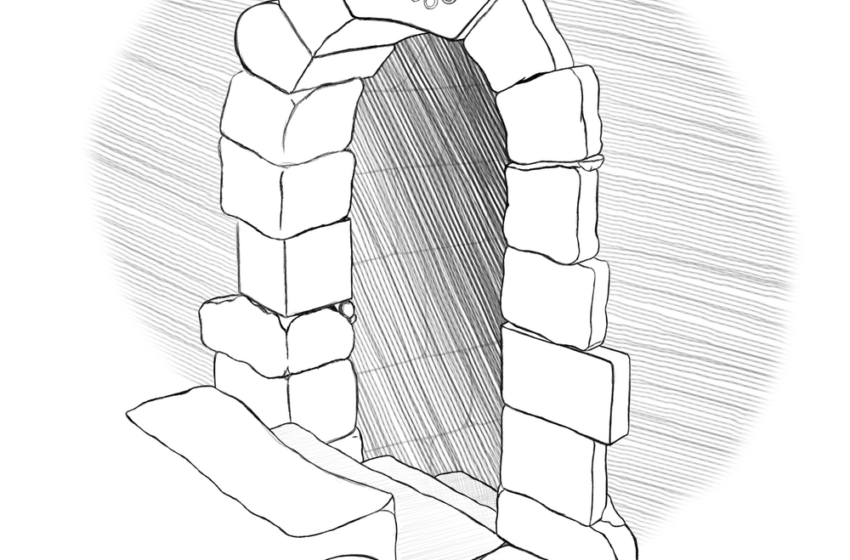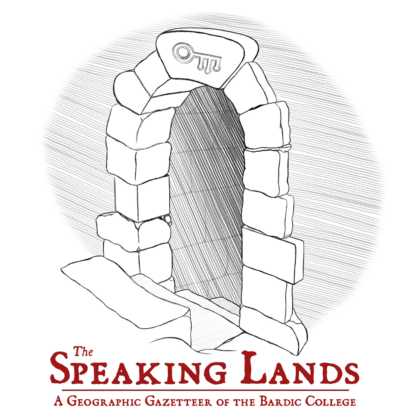I’m still on love with the name for this week’s entry: WILDERMARCH! It encapsulates everything I love about this corner of the Speaking Lands map. It’s wild, sure, but it’s also the March, the frontier; the name implies its nobles (marquises), which implies castles and intrigues, and it’s both far away—a long march—and you can also just sort of imagine marching around within it. But I am, as has been established many times over, an unabashed etymology geek.
Fun fact: Wildermarch is the leading contender for a regional setting sourcebook full of adventure hooks and GMCs to interact with and that sort of fun stuff. I daydream about this book often, even if its publication date—if I ever write it at all—is literal years in the future.
But let’s take a look, shall we?
—
Wildermarch
A rangy, rugged expanse of forest, chapparel, and coastal islands, Wildermarch spreads across the northwest extremity of the continent. Popular conception everywhere else characterizes the area as a distant and exotic locale; the phrase ‘to the Wild March and back’ is found in multiple languages as a hyperbolic euphemism for a long journey. The reputation is understandable: the area is relatively isolated, with the sparsely-populated Toriel Highlands, Norsteppes, and Outland between it and other centers of population.
The land itself is rich if (eponymously) wild. The grain harvests are plentiful, and the fisheries of the Rushing Sea and the region’s many rivers produce bountiful yields. The landscape is rugged and prone to flash floods, making travel difficult. Large tracts of land remain all but untouched and untraversable by the Speaking Peoples, full of dangerous wildlife with no fear of people. Many residents don’t go out after sundown for fear of the packs of wolves known for coming down out of the hills.
A particularly territorial species of treewalkers occupy the deepest woods here. These arboreal behemoths seem to be fond of destroying artificial constructions such as buildings, roads, and fences. Attempts to pierce or traverse their territorial ranges often fail. Farms and fields are destroyed by the slow-moving but unstoppable creatures. Forest roads can disappear in a fortnight, replaced by blank woodland.
Despite the difficulties, many different peoples call Wildermarch home. Nearly all of them came here as refugees. Everyone here has stories of being displaced by larger, stronger, and more dastardly peoples. Some of the stories are so old and their details so vague that it is impossible to tell if they describe the initial displacement to Wildermarch or a later displacement within Wildermarch. The arrival of satyrs, kobolds, goblins, and elves are all documented; the story behind the local gnoll, ork, and troll populations are murkier. When speaking of their history, many people here quote the Trollsong, which begins and ends with the lines “We do not come from here / but this is our home.”
Politically, Wildermarch is a patchwork quilt of small balkanized states and cities. A few conquerers and overlords have come close to unifying Wildermarch, but none have managed to establish a lasting dynasty or leave behind a stable state. Ancient ruins litter Wildermarch from at least three empires, and recorded history tells of King Silenos and his heirs who forged and lost a powerful kingdom here, centered on the grand city of Dion.
Many pin the region’s disunity on the Curse of Julianna, but others suggest that it is because Wildermarch has never been part of a broader community of stable states, or that travel difficulties make large-scale coordination difficult, or insist that there are just too many different peoples in Wildermarch to forge widespread political stability. (The latter always segue into which peoples should be expelled, for everyone else’s sake.)
For the last few generations, the region’s petty nobles and free cities have been content to operate independently, occasionally recognizing ancient pacts between their ancestors when a few months of collective effort is to their obvious advantage. When trade opened with the Ivory Queendom and Mazzantlindong, these once sleepy little fiefdoms were yanked into modern prosperity.
The Dread Tyrant conquered Wildermarch last: the logistics of conquest and control were always more costly than the tribute that could be extracted. It was only when these scattered crowns and cities were the only targets remaining that he focused his terrible attention here. After his fall, Wildermarch collapsed into weeks of bloody fighting as his oldest territorial lieutenants attempted to create successor states. Nearly all of them came to bad ends, with a few retreating to strongholds to lick their wounds. The scattered local lords lack the power or will to uproot them, making them just another deadly threat lurking in Wildermarch.
—
I always like when the poll has a wide range of different kinds of entries, and today we’ve got geography, ethnography, folklore, and a city. Which one strikes your fancy?
This poll is going to run a bit longer than most, since we’re diving right into the holidays. I’ll be bringing the next entry to you guys on Janurary 11th!

